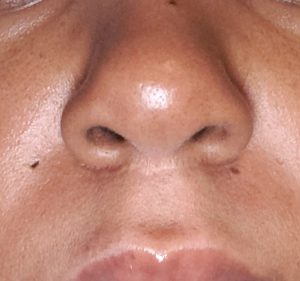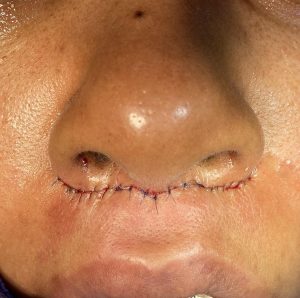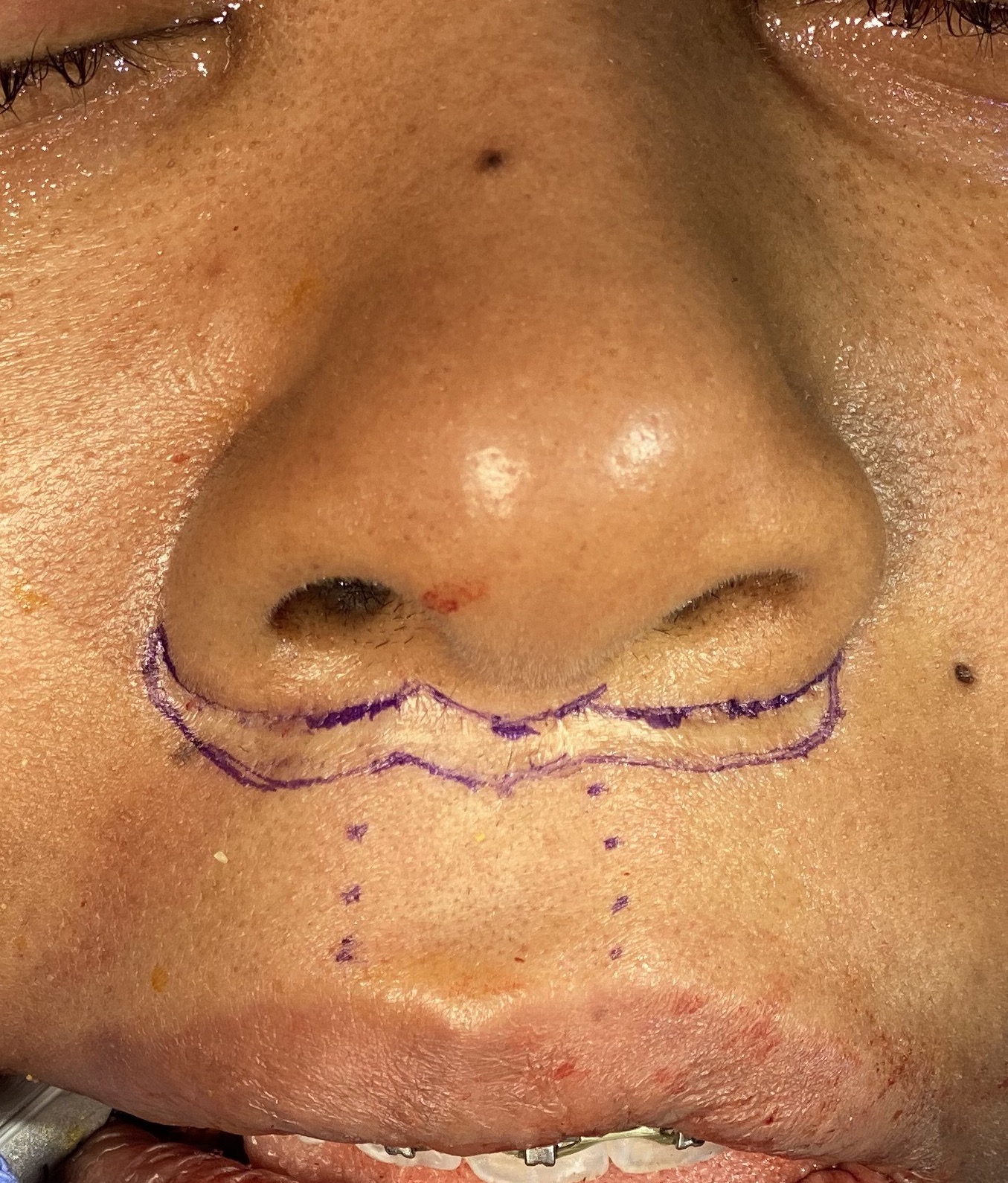The subnasal or bullhorn lip lift is the most well known of all the surgical lip reshaping methods. It is a true lip lifting procedure given that its excisional location is at the nasal base-lip crease which results in a superior pull when closed. The length of the upper lip is shortened and with that movement comes some elevation of the smile line and increased tooth show. (although there is not a linear relationship between the amount of skin removed and the tooth show that results)
One of the most appealing aspects of the subnasal lip lift is the scar location. Located at the junction of the nasal base and upper lip, it has the potential to heal in a fairly discrete fashion. But despite being at a favorable location this does not always guarantee that it will be an undetectable or even a good scar. There are a lot of reasons that such adverse scarring can occur from the closure technique used, how much skin has been removed, the pattern of the closure line to the patient’s skin pigmentation.



There are some patients that have a poor subnasal scar because they may not have had a favorable nasal base-lip junction initially. Such patients usually lack a well formed nasal sill with a wide open pathway into the lower end of the nostrils.,,,having no crease line to hide a scar. Scar revisions in these patients may not have optimal results.
Dr. Barry Eppley
Indianapolis, Indiana



